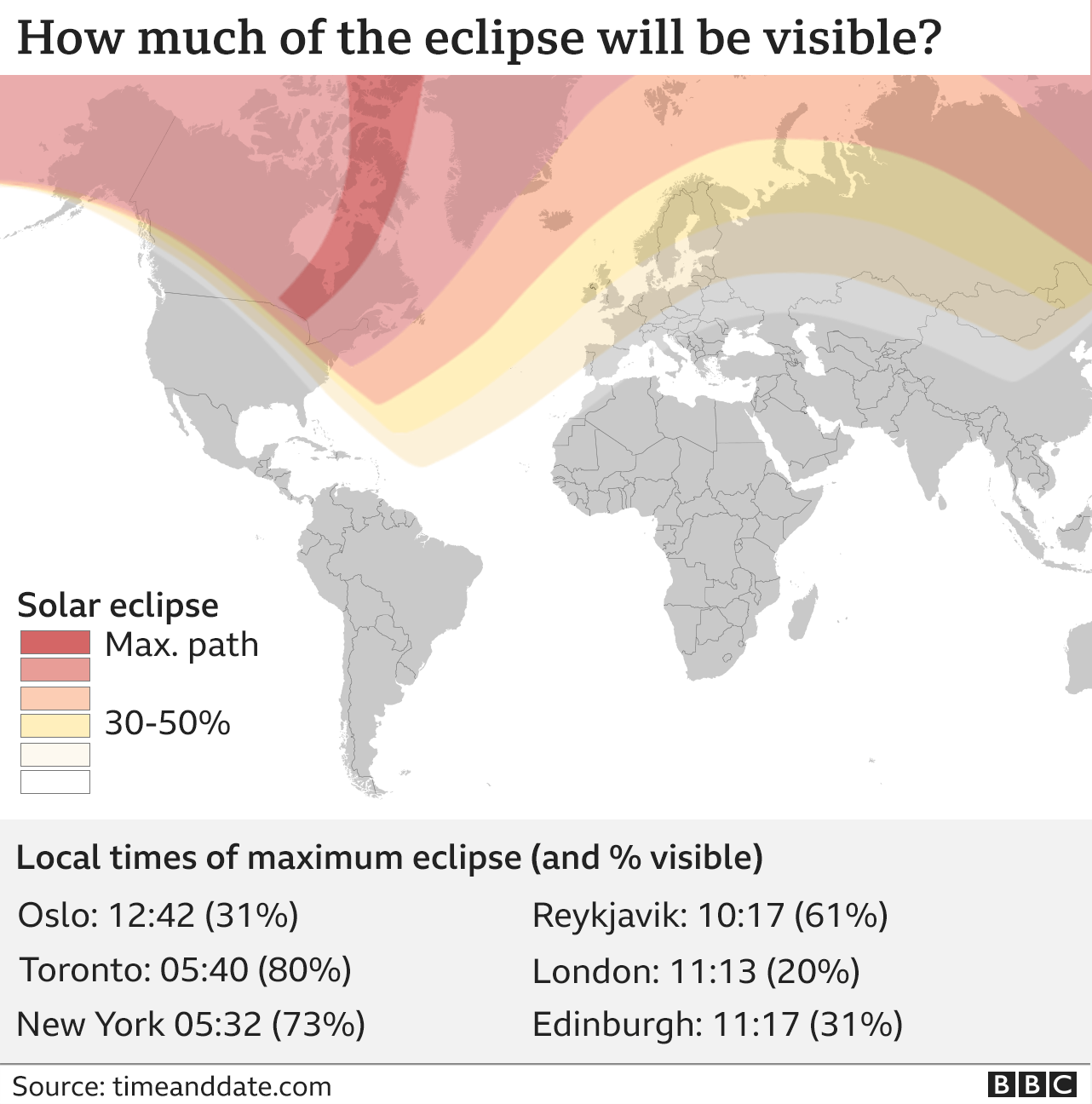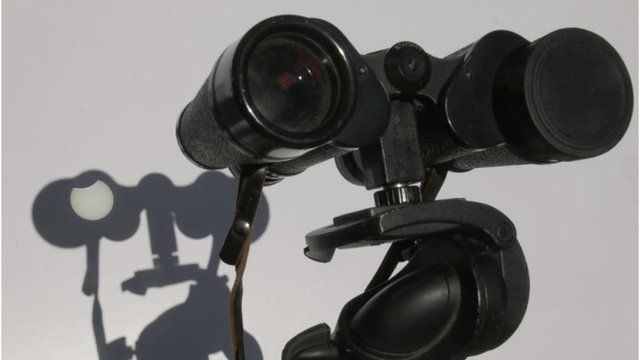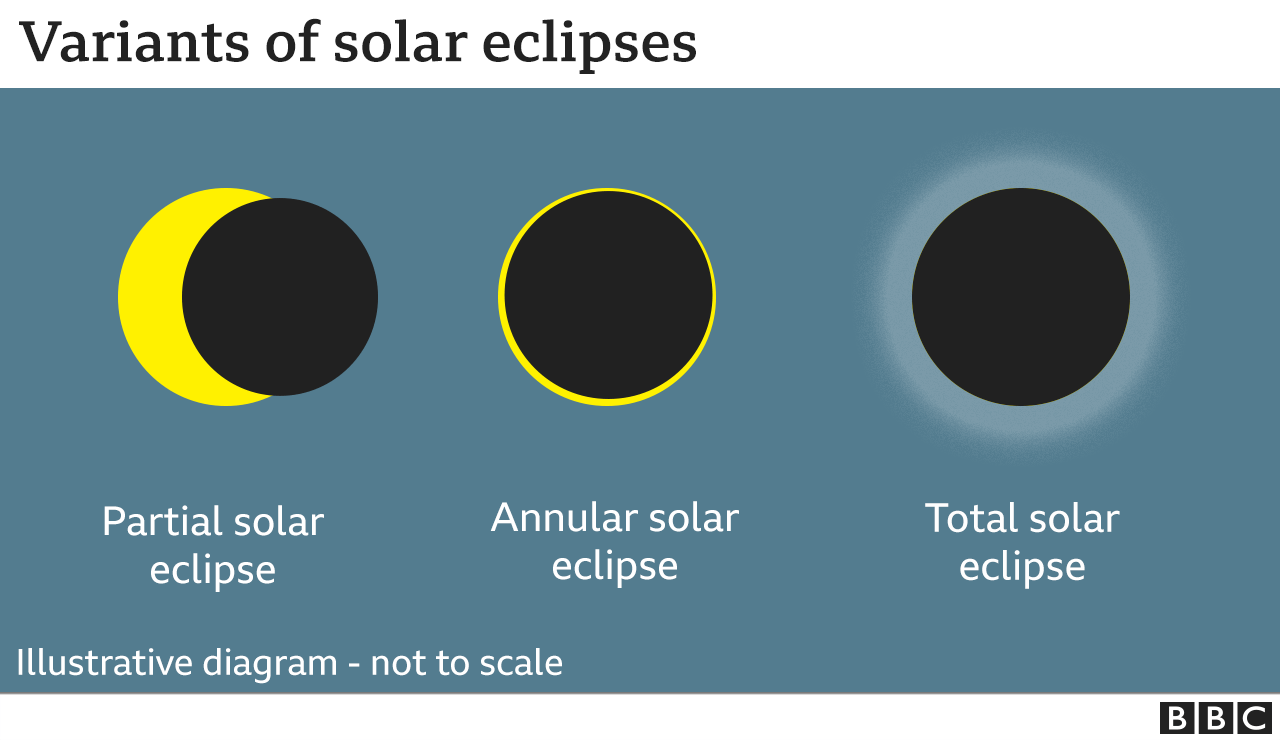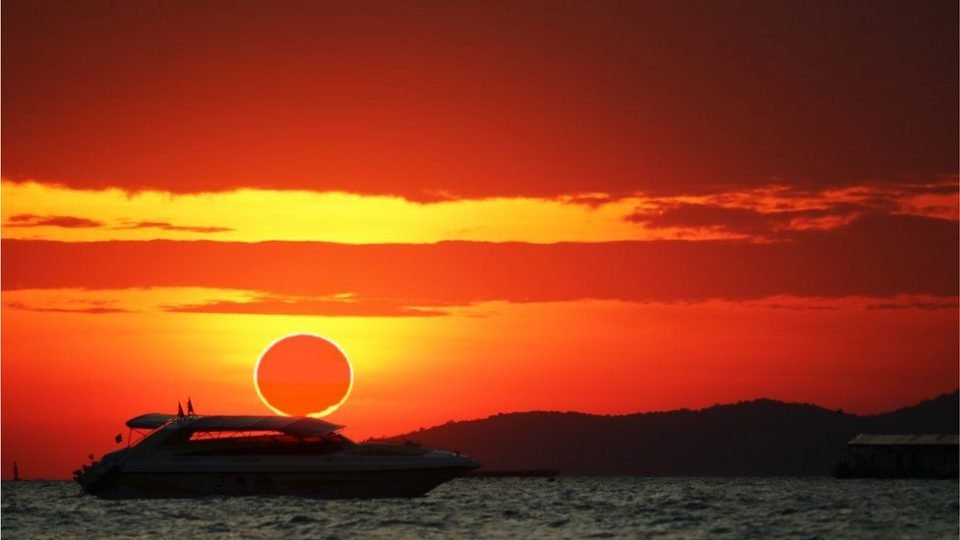It’s celestial showtime on Thursday as much of the Northern Hemisphere gets to witness a solar eclipse.
This particular event is what’s termed an annular eclipse. It will see the Moon move across the face of our star but not completely block out the light coming from it.
Instead, there will be just a thin sliver of brilliance left to shine around the Sun’s disc.
The best of the action will be in the Arctic.
Yes, not many people live there, but a good portion of the globe will still get treated to a partial eclipse where the Moon appears to take a big bite out of the Sun.
This will include the eastern United States and northern Alaska, along with much of Canada, Greenland, and parts of Europe and Asia.
In the UK, the most favourable place to watch, in terms of the percentage of the Sun’s disc that gets covered up, will be in Scotland – somewhere like Lerwick in the Shetland Islands (11:27 BST), or Stornoway on the Isle of Lewis (11:18 BST)
These places will see about 40% of the Sun eclipsed.
But even down south, in London (11:13 BST) for example, 20% of the star will be covered over.

As ever, the advice is not to try to look at the Sun with the naked eye. This can do severe damage.
Anyone gazing skyward should only do so with the aid of protective viewing equipment, such as approved eclipse glasses or a pinhole projector.
Better still, attend an organised event. Local astronomy clubs will be out in force to show people how to view the eclipse safely.
There’s some good advice here from BBC Sky At Night magazine and the Royal Astronomical Society and the Society for Popular Astronomy.
 IMAGE COPYRIGHTROBIN SCAGELL
IMAGE COPYRIGHTROBIN SCAGELLThe so called “path of annularity” – the track across the Earth’s surface where the Moon sits entirely within the Sun’s disc to give the greatest spectacle – begins at sunrise in Ontario, Canada, at 09:49 GMT (10:49 BST).
It then sweeps across the top of the globe, including over the North Pole, to eventually reach Russia’s Far East and lift off the planet at sunset at 11:33 GMT (12:33 BST).
The place which enjoys the greatest duration eclipse – at almost four minutes in length – is in the middle of the Nares Strait, the narrow channel that divides the Canadian archipelago from Greenland.
There’ll be few there, however, to see 90% of the Sun’s disc being blocked out. Perhaps only the odd walrus or two on an ice floe.
For all other locations, there are plenty of calculators out there where you can input your nearest city or town to get more relevant timings, such as here.
 IMAGE COPYRIGHTSTEFAN SEIP
IMAGE COPYRIGHTSTEFAN SEIPNot every eclipse can be total. The Moon’s orbit around the Earth is not perfectly round; the satellite’s distance from the planet varies from about 356,500km to 406,700km (221,500 to 252,700 miles).
This difference makes the Moon’s apparent size in the sky fluctuate by about 13%.
If the Moon happens to eclipse the Sun on the near side of its orbit, it totally blocks out the star (a total eclipse). But if the Moon eclipses the Sun on the far side of its orbit, as now, the satellite will not completely obscure the star’s disc – and a “ring of fire” or annulus of sunlight is seen.
But no less wonderful.
“An eclipse gives us an opportunity to connect with the Sun,” said Prof Lucie Green from the UCL Mullard Space Science Laboratory.
“Normally, our star is so dazzlingly bright we kind of don’t pay it much attention. But during an eclipse of one form or another, we’re able – if we look safely – to watch the Moon glide in front of the Sun and remind ourselves of this clockwork Solar System we live in,” she told BBC News.



